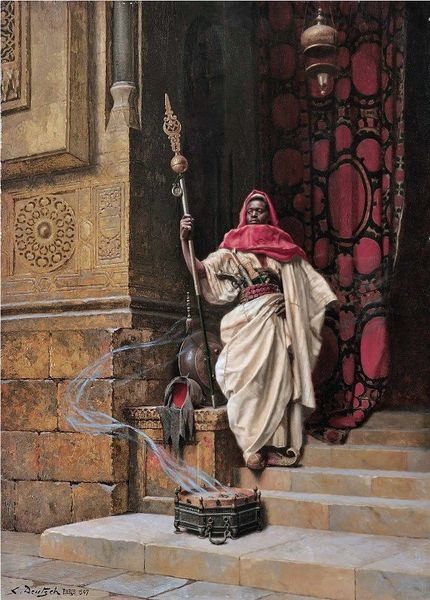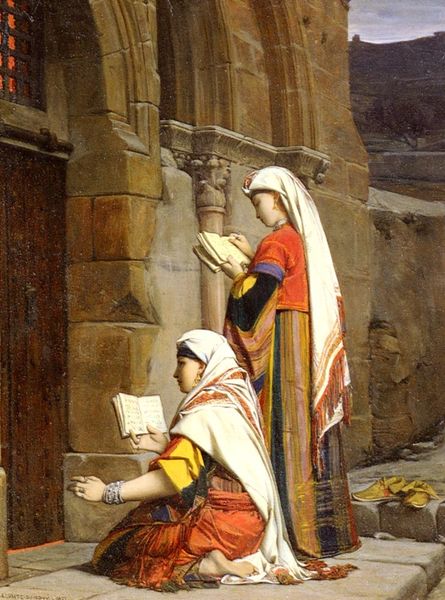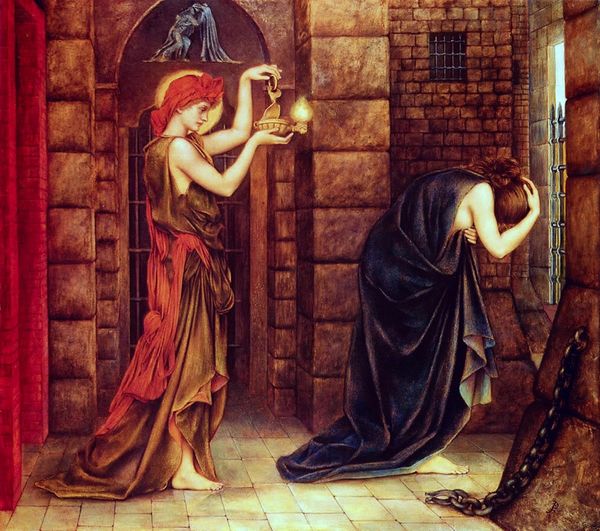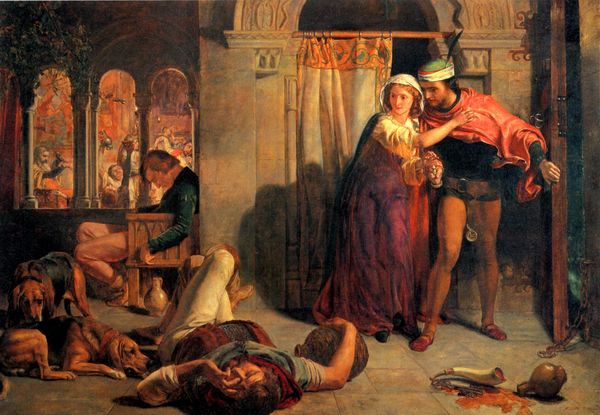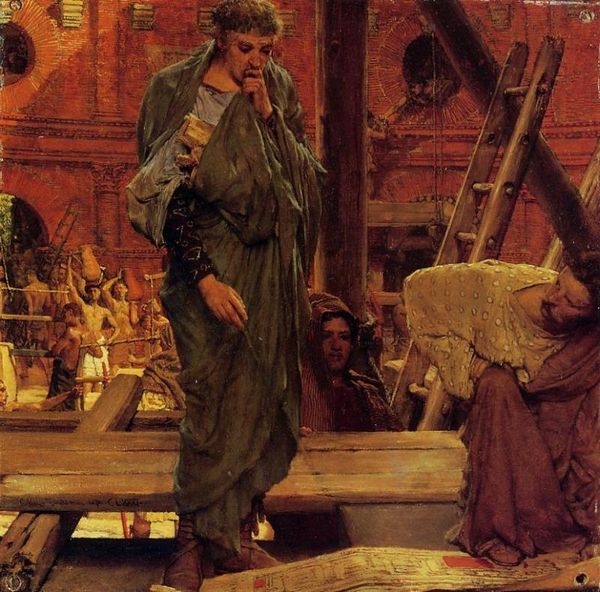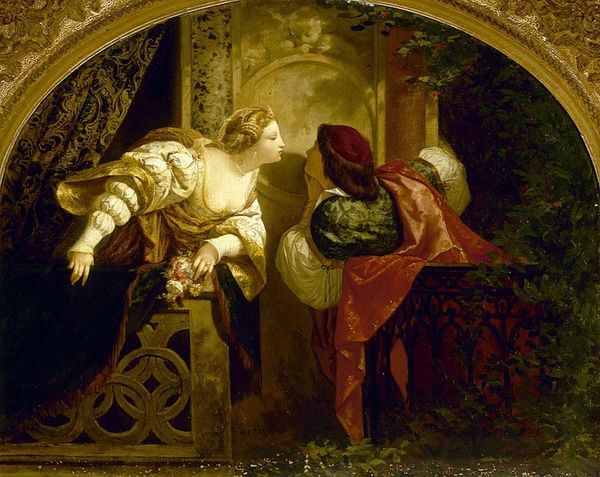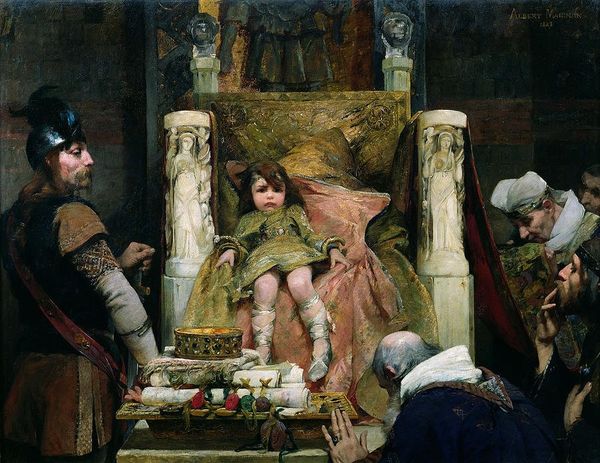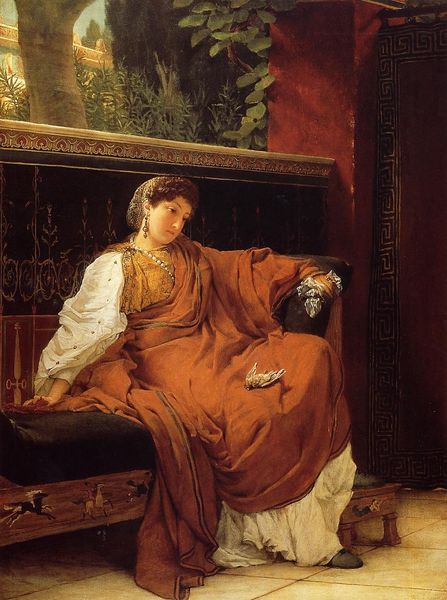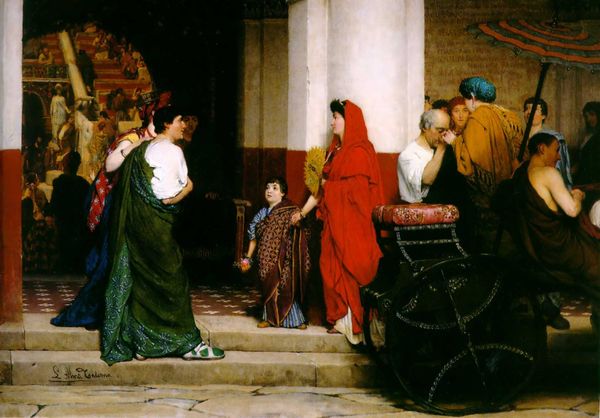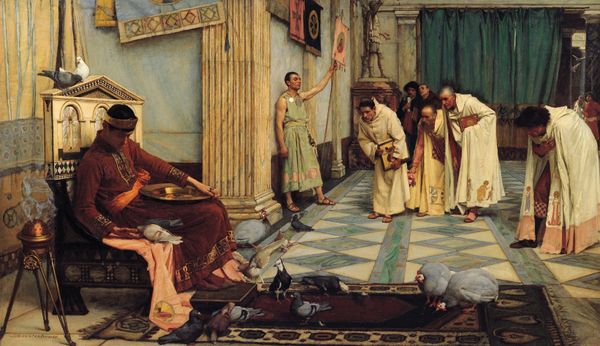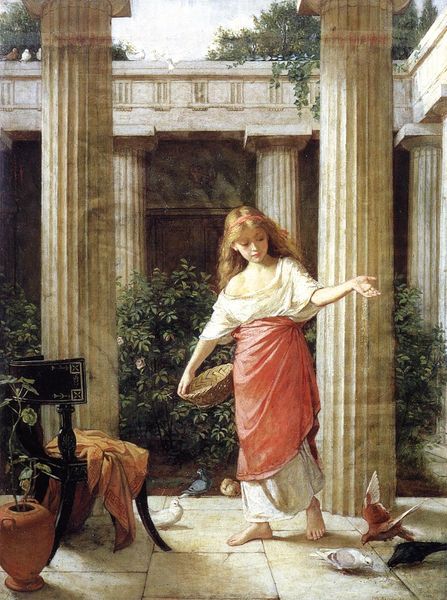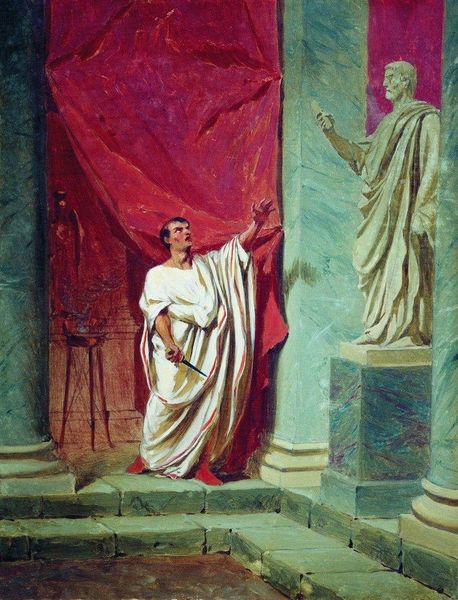
Dimensions: 86.5 x 111 cm
Copyright: Public domain
Editor: So, this is "At Marguerite Rempart," painted by James Tissot in 1861 using oil paint. I’m struck by the contrast between the colorful buildings in the background and the somewhat melancholic figure in the foreground. What do you see in this piece? Curator: Immediately, I see a young woman caught in a transitional space, both physically within the city walls, and perhaps emotionally as well. The Marguerite Rempart itself, the city wall, acts as a visual and psychological barrier. Note how she’s positioned next to that small oratory; traditionally such spaces offered solace, representing refuge and faith. Editor: Interesting. Is she finding comfort there, or is she just isolated? Curator: I believe there’s ambiguity, and Tissot likely intended that. Her clothing, especially that headdress, is both restrictive and perhaps indicative of mourning. What do those items and adornments surrounding the woman mean to you? How might the garland be relevant to what is around her? Editor: Hmm, perhaps she is a representation of innocence or mourning of life as it transitions. Curator: The garland suggests cycles, continuity even in the face of what appears to be profound sadness or introspection. And the Rempart itself speaks of protection but also limitation, containing her experiences within those walls. The entire painting serves as a reflection on what such barriers mean, for a person, for the collective unconsciousness. Editor: I see now, the wall is both a physical place and a symbol for inner, personal constraints. This changes the piece's mood, now more psychological than romantic, to me. Curator: Precisely. Looking closely reveals the intricate tapestry of symbols Tissot has woven, prompting us to consider our own ramparts, both real and imagined.
Comments
No comments
Be the first to comment and join the conversation on the ultimate creative platform.
